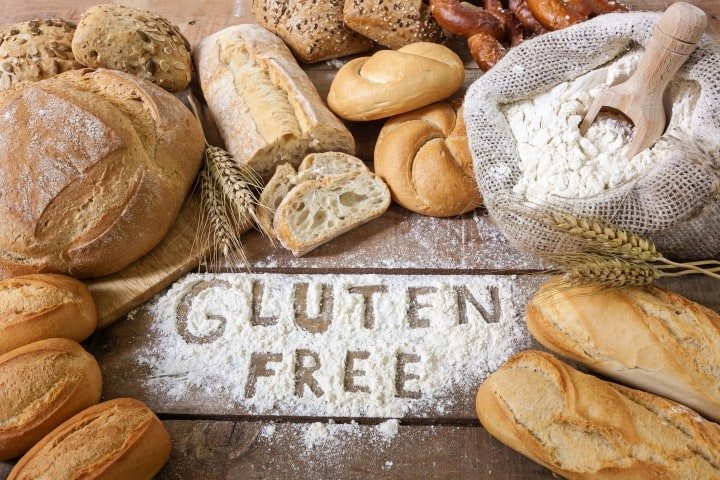Blog
To Gluten or not to Gluten
Gluten is a word that many people have heard and probably used without really knowing what it is or what it does. It’s on countless products these days accompanied with other words like “free” or “contains.” People, without really knowing why or if they actually should, are avoiding it like it’s the new plague. There are a group of people who definitely have to be wary of their gluten intake; they have an autoimmune disorder known as celiac which makes the body reject gluten with various degrees of vigor; this can result in mild discomfort to severe illness. It can be life-threatening. If you don’t have this disorder, however, the question about your gluten intake is more complicated.
Gluten is not inherently bad; in fact, it is a protein that is good for you and is in products that benefit your body. Gluten free does not mean better for you, it does not mean healthier or guarantee weight loss. There are various reasons why gluten-free foods if you don’t have celiac can actually be worse for you. Many brands add in substitutes when removing gluten to ensure that their products are still tasty, like extra fat and sugar which we know you don’t really need.
Minimizing your gluten can have some benefits because it would mean giving up a lot of those simple carbs that can contribute to issues like obesity and diabetes. If you’re not careful, though, you can wind up with a nutrient deficit. You get a lot of your vitamin B needs fulfilled by certain breads and grains, especially if they’ve been fortified. Gluten-alternative breads and products aren’t fortified with these vitamins so if you’re not getting them somewhere else, you’ll end us with a deficiency. You can also wind up with a fiber deficiency if you’re not careful.
Further, “alternative” products still make your body activate the way the “real” products do. It has been found, for example, that diet sodas with fake sugars in them still cause the body to release insulin to try to process that sugar; this can result in diabetes risks and other blood sugar and insulin issues which you may not have gotten if you were just consuming real sugar (and trying to minimize the amount you were consuming instead of replacing it).
Whole wheat is good for you as a strong source of fiber; you have to eat significantly more, and more often, of fruits, vegetables, brown rice, quinoa, or beans to get a sufficient amount of daily fiber.Going totally gluten-free is a difficult thing to do because gluten is utilized in some unexpected areas, like vitamin casings; therefore, if you don’t have to do it, you don’t have to do it. and really, it’s best for your health if you keep your gluten intake unless it makes you sick. Experts recommend getting a celiac diagnosis officially before making the switch because of the negative effects gluten-free can have on those without the disorder.
So, the answer is: gluten if you can, ask a doctor if you think you can’t.
If you can’t have gluten because of celiac’s or a similar discomfort there is a growing market for gluten-free everything. Millet is a grain that does not contain gluten and it makes a “white” bread and bagels that are almost indistinguishable from flour-based products. I know a local brand, Sami’s Bakery, that makes some high quality products in NYC. You can also look at products made with things like almond or coconut flour and learn to make your own breads and baked goods.I have had pretty good pasta that’s gluten free. And that amazing pasta/rice alternative that’s already the biggest trend since sliced bread (see what I did there), quinoa, is naturally gluten free. It is a grain that is high in protein without the simple carbs of pasta; and it won’t exacerbate your gluten allergy. Buckwheat makes a killer “pasta” salad with bell peppers and tomatoes, olive oil and lemon juice. And if you need your crunch factor but can’t find any brands in your area that offer gluten-free chips, go for popcorn. Double check your labels because some products are made in high-gluten environments that can affect your allergy, but corn is naturally gluten free! Corn Chex can replace your cheerios in the morning and you can add some sugar (coconut sugar is a healthier alternative) or honey to get that frosted or honey-nut flavor!
I find that making things myself makes them more satisfying because I’m in control and the hard work has a reward at the end. If you’re a vegan who misses your fake meat products like seitan because of a gluten intolerance, jackfruit is the new miracle food. It comes out like pulled-pork and tastes amazing with a barbecue flavoring. And it’s a fruit, which is crazy! More and more brands are coming out with crackers, chips, cookies, pastries that are made without gluten. The demand is rising, like I said, because so many people think that it’s a health choice. That’s not great for them, but it benefits you when companies listen to their consumers and find gluten alternatives. Years ago, we didn’t even know what was causing the discomfort and sickness that those with celiac’s experienced. And now, you can have a sandwich, a bagel and a cupcake without having to worry about a stomach ache later. Of course it’s not all easy because of the places where gluten is a hidden, secret ingredient; but, technology and research work wonders and we are moving toward a gluten-alternative filled world that will only continue to make those with celiac’s happier and easier, and those without more and more confused.





